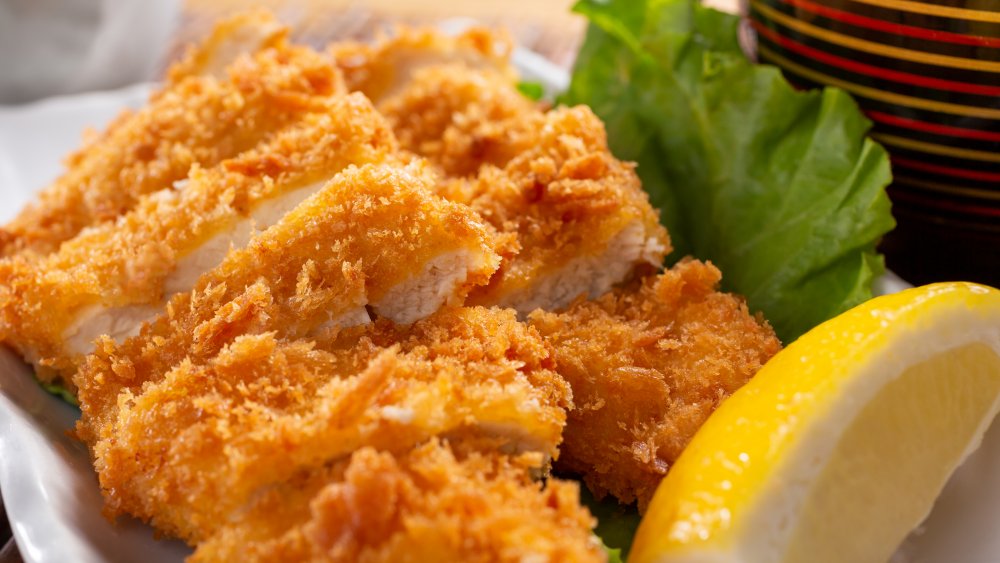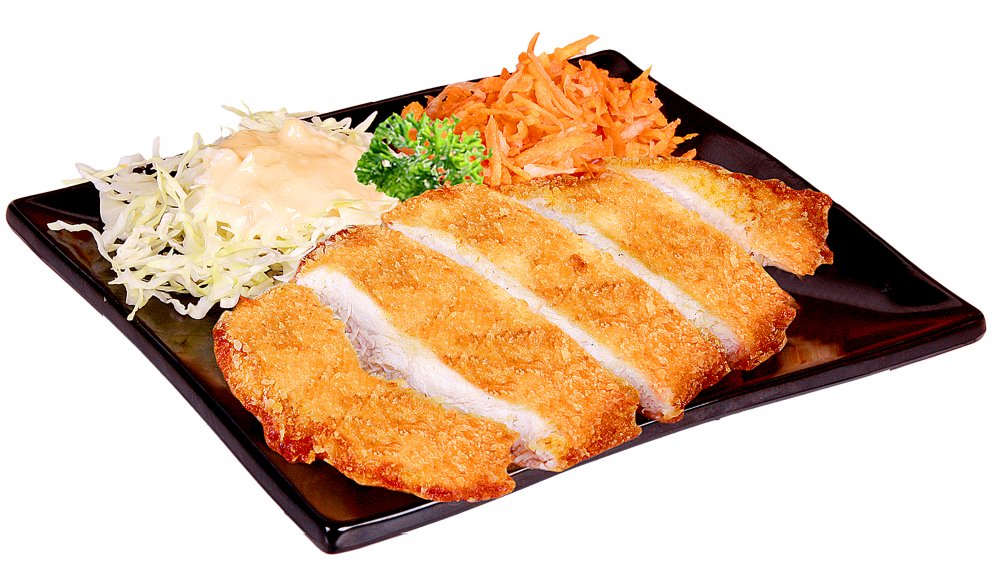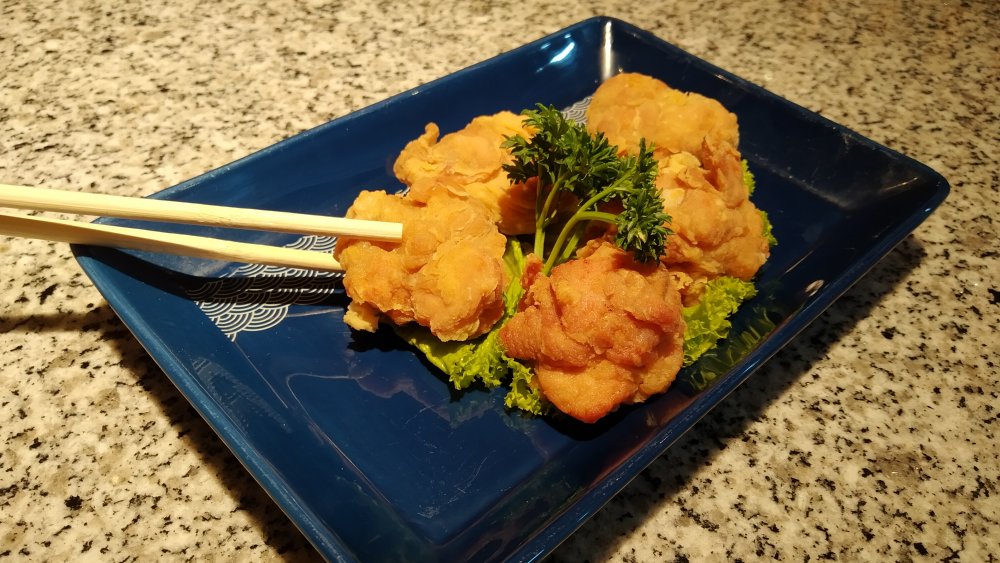The Real Difference Between Katsu And Karaage
If you're a fan of sushi and ramen, it wouldn't surprise us if you thought Japanese cuisine consisted primarily of dishes that would be served raw or lightly cooked. So it might come as a surprise that the Japanese enjoy their fried foods as much as the rest of us who live outside of Japan do.
The technique of cooking in hot oil was brought to Japan courtesy of the Portuguese and their Christian missionaries in the 1600s (via Aetna). While it's not exactly known what ingredient was battered and fried first, we do know it was prepared so that Christians could eat during Lent, a time when eating meat is forbidden. The country's first fried dish, tempura, actually comes from the Latin phrase "ad tempora cuaresme", which also means "in the time of Lent." The technique was brought to the port city of Nagasaki and from there, the method of deep-frying took off, and different styles of frying meats were introduced. Among the creations that later emerged were katsu and karaage. While they share some similarities, there are noteworthy differences.
Meats breaded and deep friend until golden to make katsu
Japanese katsu is as close to Austrian schnitzel as it gets. The idea of preparing meat in cutlets – or katsu – was brought to Japan by the French, but the dish didn't really tickle the Japanese palate until they were served on top of bowls of rice (via KTon). When meats are prepared as katsu, they are breaded with flour, eggs, and Japanese breadcrumbs (also known as panko) before they are deep-fried until they are a golden color.
Katsu can be made with seafood, pork, and chicken, and the best chicken cut for this is a boneless chicken breast that is first cooked before it is served in diagonal strips. Katsu has its own dipping sauce, which Just One Cookbook describes as a thick variant of the sauce we know as Worcestershire, with a flavor that is tangy and sweet at the same time. Katsu can be enjoyed with curry sauce, too, and can be enjoyed with rice or in a sandwich.
Karaage is fried a different way
Like katsu, karaage is also deep-fried, but in this instance, the protein (usually chicken) is marinaded – usually in soy sauce, ginger, and rice wine, making the meat extra flavorful than katsu – which can be dry. Karaage is more than just a dish; it's a fried sensory experience.
Karaage's thin, crisp, golden exterior is made with a skin formed by using a potato starch batter, which crumbles gives way to succulent pieces of boneless chicken which can be both meaty and fattier, depending on the cut of meat you use (via Meat+Poultry). The New York Times recommends you use chicken thighs that have been deboned and cut into two-inch chunks. In Japan, karaage is sold on skewers or served with a bed of greens and eaten with different types of sauces.


